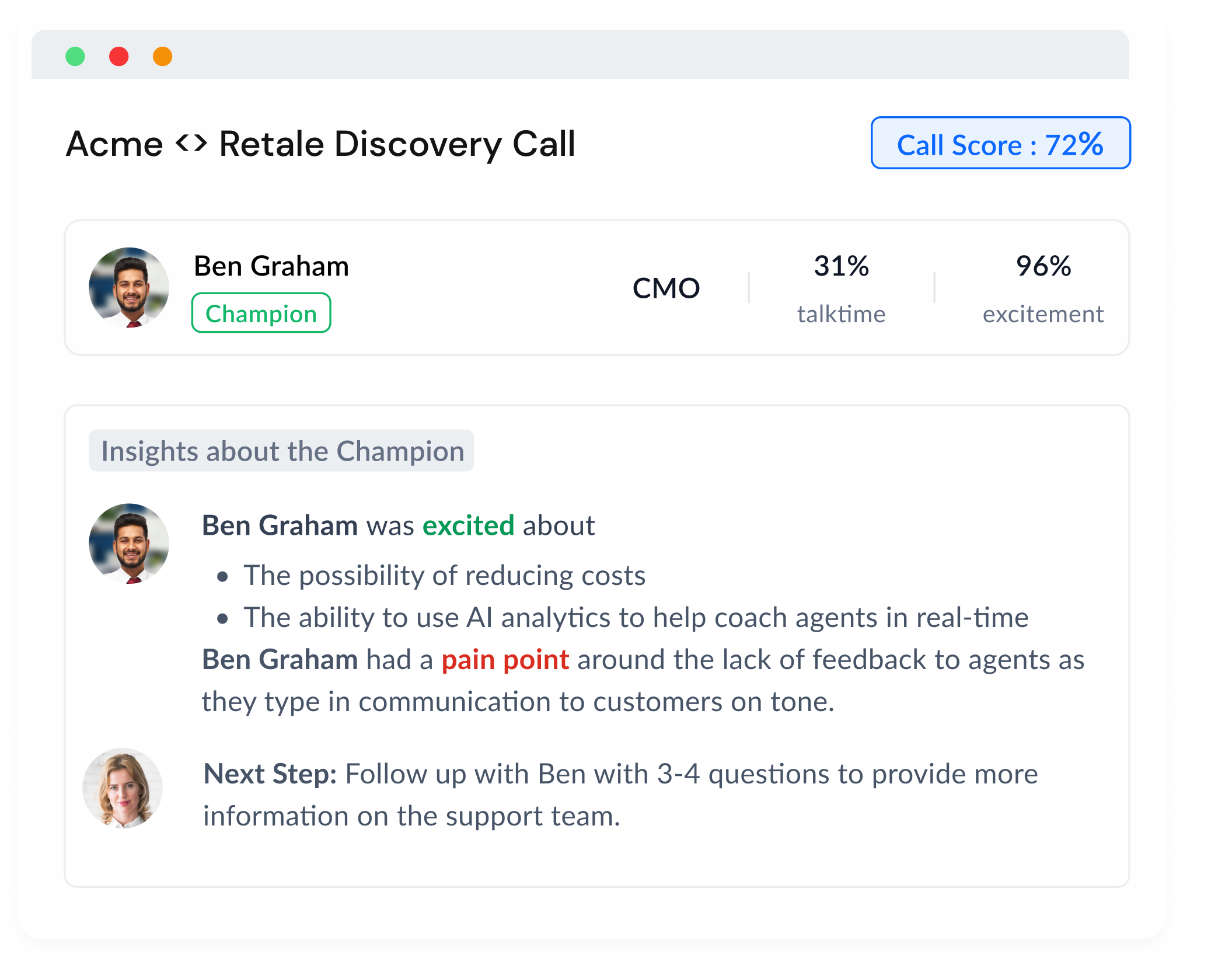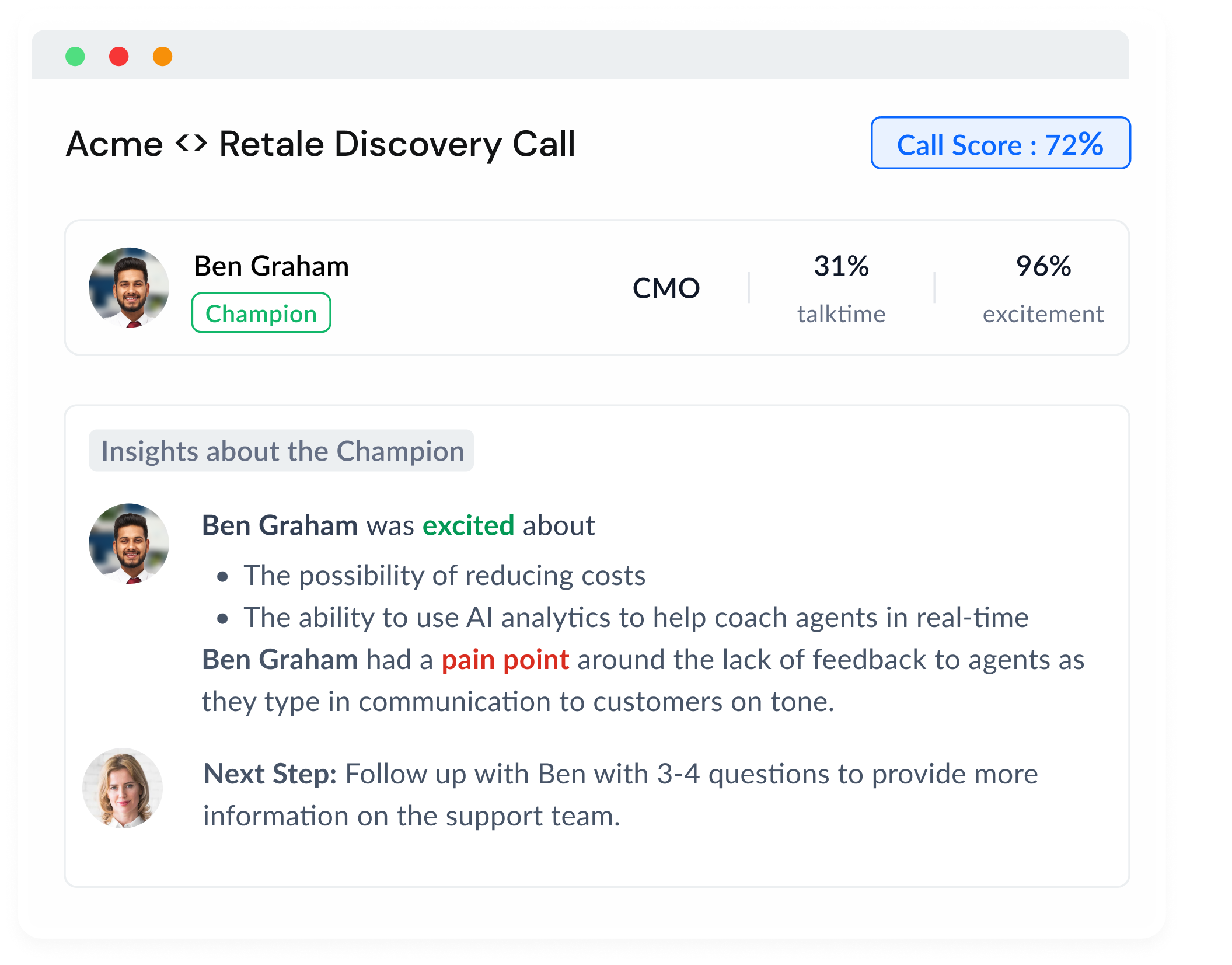The post-ChatGPT world is well and truly here. AI summarizer tools are abundant, and we have more choice than ever to summarize any kind of text. All to make better decisions quickly, no matter what your source of text: hundreds of call transcripts, extensive research papers, expert articles and so much more.
Before I get into the quickly evolving world of text-based AI, let’s understand the basics.
What is an AI Summarizer Tool and Why You’d Want to Use One?
AI summarization tools help us mortal humans digest vast amounts of information and present it in a concise, easy-to-consume format.
There are many business reasons to use AI summarizers, and I’ll get into those in just a bit. But for now, let’s imagine Sarah, a busy SaaS entrepreneur who has hundreds of calls and meetings as she builds her team and business from the ground up.
Every day, Sarah is inundated with tens of call transcripts, some with her prospective employees and many with business prospects and partners. A hundred emails, at the minimum. She must also keep up with the trends and news in her industry and community. There’s always something going on and she can’t help but wonder if she’s missing some piece of important information she needs in life or business.
Sarah loves her work, sure. But likes having time to herself even more. Where’s the time for that, though? Well, she can and hopefully does, find that time with AI summarizers :)
AI summarizer tools are innovative AI applications that condense large volumes of text into concise, easily digestible summaries. With AI superpowers, these tools have an uncanny ability to identify and extract the most crucial points, presenting them in a clear and structured format, reshaping the way people consume information, making the process far more efficient and enjoyable.
In a world where the importance of timely and accurate information keeps growing, AI summarizer tools are indispensable to make better decisions, know and understand more, and achieve a semblance of work life balance!
Full disclosure, by the way. Text summarization is pretty close to my heart. I started out working in natural language processing during a winter internship at Stride.ai, where I worked on text summarization models for news. That project helped me go deep into the topic, and I ended up working on summarization in a variety of projects after that in school, work, and eventually in my own startup, Sybill.
If it were not for my interest in summarization, Sybill might not have existed, and I might have been doing something else. So yeah, summarization is something I truly believe can make a dent in our traditional ways of working. And it's a technical problem to solve and a use case AI experts should be diving deep into.
In this guide, I dive into the different kinds of summarization, the top use cases for it, and the most popular tools for each use case. This space is evolving very quickly, since there are new AI tools developed and deployed every single day, and a new summarizer every week that’s based on some alteration in a popular large language model (LLM). I hope you’ll get a lot out of this guide as you make your own choices.
Interlude: Types of AI Summarization
Before we dive into the best AI tools for creating a summary of a given piece of text, let’s look into what we exactly mean when we talk of a summary. There are two technical ways in which a summary is created:
- Extractive summarization selects key sentences or phrases from the original text to form a summary. While it preserves the text's original wording, the summaries can sometimes lack fluidity or omit crucial context.
- Abstractive summarization rephrases and restructures the original text to craft a summary. This method produces smoother summaries that encapsulate the text's essence, but it might occasionally introduce errors or stray from the original content.
So when you pick out the most important or representative quotes from a graduation speech, it’s a form of extractive summarization.
When you go home after work and tell your partner or friend about how your day was, that's an abstractive summary.
When to Use Extractive or Abstractive AI Summarization
Extractive summarization is best suited for scenarios where maintaining the original wording is important, such as when summarizing legal documents or scientific research papers.
Abstractive summarization works well for summarizing conversations, news articles, or blog posts, where the focus is on conveying the main ideas rather than preserving the exact language.
Tailoring AI Summarization to Contexts and Use Cases
Or how to choose the right AI Summarizer
Summarization is highly context and use-case dependent. A tool that excels at summarizing one type of content might struggle with another. For example, a summarizer designed for blog posts and web pages may perform poorly when summarizing conversations or legal reports. To choose the right summarization tool, consider the specific requirements of your use case and evaluate each tool's ability to address those needs.
There obviously are certain general-purpose summarizers like ChatGPT that can summarize a variety of types of text well. But when it comes to enterprise use cases like sales or critical use cases like medicine, a general-purpose summarizer’s accuracy and coverage would not be sufficient. These use cases would need specialized AI summarizers tuned to their specific needs.
In this guide, we will focus primarily on long-form text summarizers and conversational summarizers.
AI Summarization Tools: A Quick 101
General-Purpose Text Summarizers
These tools are general-purpose, i.e. they are good at summarizing a variety of types of text. They can deal with articles and scientific papers reasonably well at the one end, and with conversations and logs at the other. However, they may not be best suited for specialized use cases, but might be a good starting point even for them.
Most of the popular LLMs are pretty good at this - ChatGPT, Claude, and Bard to name a few. Pre-LLM revolution summarizers like QuillBot, OneAI and the lot also come under this category. Let’s look a bit more deeply at the most popular ones in each of those buckets.
ChatGPT
ChatGPT, powered by OpenAI, is a popular AI summarizer for general-purpose text. It excels at generating coherent and concise summaries while maintaining the overall meaning of the source text. You can also tune the length, the tone and the focus of the summary by cleverly prompting it and stating your intent.
There’s little surprise that this magic summarizer, available for less than a few McDonald’s meals, has over 100 million users and a base that keeps growing exponentially every day!
But there’s a catch.
ChatGPT may generate summaries that deviate from the original content or introduce inaccuracies. It might also miss important details from summaries. t’s not quite equipped to understand what a domain-specific important detail is. For instance, a prospect might mention in a sales call that they use Salesforce as their CRM system, but if that’s the only sentence in a 45 min call that references this fact, ChatGPT may fail to pick it up while summarizing the call, since it doesn’t know that that could be an important detail for the salesperson.
QuillBot
Quillbot is a versatile AI summarizer that works well for general-purpose text summarization. It offers multiple modes, including standard, creative, and formal, to cater to various content types. However, it may not always provide the most accurate summaries, especially when dealing with complex or niche topics.
PS: QuillBot has also nailed the SEO game for AI summarizers, and I tend to be a little skeptical of the tools that do because their superior SEO position gives them a chance over the long term not to be the innovation leader and still get the required demand. However, I recommend you try it out for yourself and figure out if it’s a good fit for your use case.
QuillBot recently wrote about how it can work together with ChatGPT. I personally don’t find the arguments convincing enough - whatever it says that QuillBot can do (summarize, paraphrase, etc.) on top of ChatGPT output is something ChatGPT can also do by itself. However, plagiarism detection and citations might be interesting topics to look into, if you’re considering QuillBot.
Conversation Summarizers
Why not use ChatGPT or a similar LLM for summarizing conversations?
3 major reasons why you shouldn’t use ChatGPT for summarizing conversations:
- Prompting: You need to be an experienced prompt engineer with lots of tweaks up your sleeve to get ChatGPT to summarize specific types of conversations appropriately for you. If you just ask it for a summary of a conversation given its transcript, it simply won’t work as well as a domain-specific tool will.
- Multimodality: ChatGPT can only summarize based on text. It can’t take in other parts of the conversation, like the video, audio, or metadata of participants, or context from other channels of communication like email or social media. Figuring this out on your own brings back to the first point - it’s a steep learning curve to figure out how to provide all of that context with the right prompts to generate the best possible summary.
- Workflow: ChatGPT is a standalone application, and doesn’t yet integrate with the system of record for your conversations yet. The summarizers close to the conversation providers like Microsoft Teams are meant for general-purpose meetings, and such don’t cater to any specific types of meetings (product design calls, sales calls, consultation calls, etc.).
Now, let’s dive into some conversation-specific summarizers:
Otter
Otter.ai has established itself as one of the best end-user-facing transcription tools out there. It has a low word error rate, a decent way of matching statements to speakers, and doesn’t generally crash. But is Otter a good bet for call summaries?
Depends on how good you want your AI summarizer to be in the context of conversations.
For example, the above is a summary of a call that I had, discussing a content writer position in my startup, Sybill. As you can see, it’s not really a summary.
Otter produces an outline of the conversation, sort of like creating chapters. And the chapters are decent, but they don’t add up to a summary at all. They are pointers to specific timestamps in the transcript.
If that’s what you want, and you’re okay listening to the call transcript later on, Otter might work for you. If you really want a summary that’s both accurate and covers the gist of the call without having you watch or listen to the call, then Otter’s summaries fall short.
Fireflies
Fireflies.ai is another popular meeting transcription software with a slick UI. It excels in the number of integrations it has with meeting providers, and the number of supported languages. Let’s look at the summaries now:
As you can see, the summary includes a few key pointers from the meeting. It’s a pretty good starting point for summarizing general-purpose meetings. You can read more about their summarization and how they compare in their own article.
However, Fireflies suffers from the same issue that AI summarizers at the heart of meeting providers like MS Teams suffer: their summaries are general purpose. They include key pointers like tasks, decisions and next steps, but don’t capture domain-specific information.
For example, a user research-focused summarizer would have a section that captures feature requests. A sales-focused summarizer would have a section that captures the prospect’s areas of interest. A customer support-focused summarizer would have a section that captures customer pain points with their usage of the product or service.
You get the drill. And this brings us to…
Sales conversation summarizers
While I’m not an expert at judging summarizers of user research calls or legal discussions or hiring calls, I am deeply familiar with sales call summarizers. The space is rapidly evolving, and new players are entering the market every week.
Here are a few aspects that an AI summarizer of sales calls needs to take into account:
- Participant context: It must know who is on the seller side and who is on the buyer side in any given conversation.
- Conversation context: This includes identifying the unique language, terminologies, and jargon used in sales interactions. By recognizing the context, the summarizer can extract relevant information and create meaningful summaries. If it has context about the product being sold and previous conversation history with the specific buyer, the summaries could be way better.
- Key Points and Action Items: An effective AI summarizer for sales calls should identify and highlight the most critical points discussed during the call, such as pain points, objections, solutions proposed, and any commitments made by either party. Additionally, it should also extract action items and follow-up tasks to ensure that sales reps can act on them promptly.
- Sentiment Analysis: Understanding the sentiment and tone of the conversation is crucial for sales teams. A good AI summarizer should be able to analyze the emotions expressed during the call, providing insights into the prospect's feelings and attitudes towards the product or service being discussed.
- Customization: Every sales team has its unique workflow and requirements. An AI summarizer should offer customization options, allowing users to tailor the summaries according to their needs, such as including specific data points, following a specific sales methodology, or integrating with other sales tools.
- Ease of Use: A good AI summarizer for sales calls should be user-friendly, with an intuitive interface that allows sales reps to access and understand the summaries quickly, without requiring extensive training or technical expertise. Ideally, it should integrate seamlessly with a CRM system, Slack, email, and the other tools that salespeople use on a daily basis.
- Extending the use of summaries: These summaries should be used by the tool to do even more intelligent tasks, like auto-fill up of CRM, generation of follow-up emails after every call, recommended next steps beyond what was discussed in the call, deal strategy, etc. Futuristic, but totally relevant to sales.
Now, let’s pick a couple of sales conversation summarizers and see how they do here.
Sybill: The AI summarizer that I personally love (and built!)
I am one of the founders, so I could be biased. G2 users, on the other hand… ;)
Let’s see how Sybill does against the criteria that I highlighted above.
Sybill has a lot of context about conversation participants (their role, their LinkedIn profile, call metadata, and more), and a pretty good level of conversation and company context as well.
It captures all the key points of interest, pain points, and points of hesitation or objections from calls in neat sections. The summaries come right into your email and Slack, as well as get pushed into your CRM systems automatically tagged to the right opportunity, company, and contact.
Sybill is also the only sales summarization tool in the market that captures and synthesizes insights from video data. It captures participant engagement and excitement levels by quantifying their non-verbal reactions throughout the call, which provides key insights into all buyers’ interest points and areas where they didn’t really care.
Behavior AI + Generative AI = best-in-class call summaries.
Sybill doesn’t yet support the customization of call summaries. The important word in the previous sentence is “yet”. :)
Sybill was the first sales intelligence tool to introduce structured call summaries and will continue to maintain the innovator’s lead. We’re building Sybill to be the all-in-one personal assistant for sales professionals.
Oh, and before I forget. Sybill also crafts an automated follow-up email from the summaries that it generates, so you can send a follow-up with just a click. Shown to save 45-60 mins per day in follow-ups and note-taking for an average SaaS sales rep.
Avoma
Avoma summarizes sales calls neatly into various sections as well. It’s a meeting intelligence platform and aims to assist sellers before, during, and after each meeting. It fairs pretty well on having participant context, and capturing key takeaways from meetings.
Avoma integrates pretty well with CRM systems (they don’t mention a Slack integration on their website) as well and allows category customization in the summaries.
Avoma doesn’t capture participant reactions during the call, and therefore its summaries only focus on the most important takeaways from the transcript, rather than focusing on the trifecta of the transcript, audio tonality, and video.
Avoma also doesn’t create follow-up emails from summaries or surface any recommended next steps based on deal context.
Overall, it’s a good call recording and summarization tool. However, the lack of capabilities in taking advantage of the summary for actionable next steps like email creation, and the unavailability of insights based on buyer engagement and excitement levels makes its price tag seem a little steep.
Other AI summarizer tools
Other sales conversation intelligence tools like Wingman are also coming up with summarization capabilities, and more will enter this growing space pretty soon. Consumers are going to have plenty of choice going forward. :)
When making a decision of what AI summarization tool to use and purchase, it’s important to keep in mind what your key factors are - optimizing on price, capabilities, ability to out-innovate the market, ease of use and customizability would all be important factors in this evaluation.
It’s clear thatAI summarization tools are changing the way we consume and process information, particularly in the realm of sales calls and conversations. By understanding the unique challenges and requirements of summarizing sales conversations, AI-powered summarization tools can deliver concise, relevant, and actionable summaries that drive productivity and enable sales teams to focus on closing deals and nurturing relationships.
Sybill users are embracing AI summarization like never before. Staying ahead of the curve, building better relationships faster, and staying organized, informed, and efficient. All of it while saving 45 minutes to an hour every single day.
If looking to evaluate an AI summarization tool in the near future, do check out Sybill’s Magic Summaries. It’s got some real magic up its sleeve!















.png)





